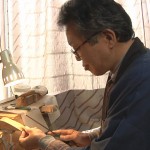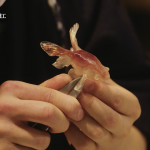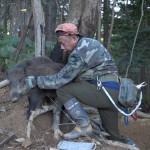
The Fall of Manchuria Began Here
 english
English
english
English


2017 US International Film and Video Festival - Silver Screen 2017 New York Festival - Finalist
For 70 years, three enormous Soviet Army bases remained undiscovered on the plains of Mongolia. The discovery of these bases supports speculation of Stalin's intent to invade Japan, completely overturning the Japanese Army's previously held conceptions of the Soviets' logistical capabilities.Large enough to fit the entirety of modern-day Tokyo's city loop train line within their boundaries, why and how did the Soviets build these enormous bases, and what role did they play in the Soviet-Japanese War? The mystery has yet to be solved.
Our investigation found that several Soviet soldiers, stationed at these bases during the Soviet-Japanese War, were still alive and living in today's Transbaikal region and other areas. Their statements revealed that Soviet Army personnel stationed at these bases played a major role in the capture and transport of Emperor Puyi of Manchukuo.
The significance of these enormous secret bases brought out in relief Stalin's previously hidden ambitions.
Click here to preview the program-
Professor in a Spiritual City- Ise City, Mie Prefecture
30 mins[Beauty of Japan Season 2] The Kogakkan University, located in the holy city of Ise, offers programmes which teach students Japanese traditions and history based on Shintoism. This is where Christopher, an American Professor, gives his lectures. What are the main ideas he wants to teach students studying in this...more details -
Art and excellence of Craftsmanships Katsushika, Tokyo
2015 30minsKatsushika ward in downtown Tokyo is one of a few cities where many craftsmen known as “Shokunins” still exist. Many of them work with skills used since the Edo or Meiji periods (late 19th century). The traditional crafts that they create through careful study of materials, experiences, and techniques are...more details -
Amezaiku (sugar sculpture) -A young artist blowing new life into tradition-
2015 30 mins[Craft Masters of Japan] Asakusa District in Tokyo is a popular tourist destination. Here in this vibrant area lies the best candy shop in Japan. Shinri Tezuka is a young candy maker working in this shop, and his masterful creations are so delicate and beautiful that they are almost too...more details -
Trap Master Kunio Katagiri and His Secrets to the Finest Gibier
 2018 Kunio Katagiri is a master trapper and has been the legendary owner-chef of a gibier (wild game) restaurant for 45 years. Katagiri, who hunts all of his game meats by himself, never uses a gun. Instead, he uses homemade traps of his own design to capture wild deer and wild...more details
2018 Kunio Katagiri is a master trapper and has been the legendary owner-chef of a gibier (wild game) restaurant for 45 years. Katagiri, who hunts all of his game meats by himself, never uses a gun. Instead, he uses homemade traps of his own design to capture wild deer and wild...more details



